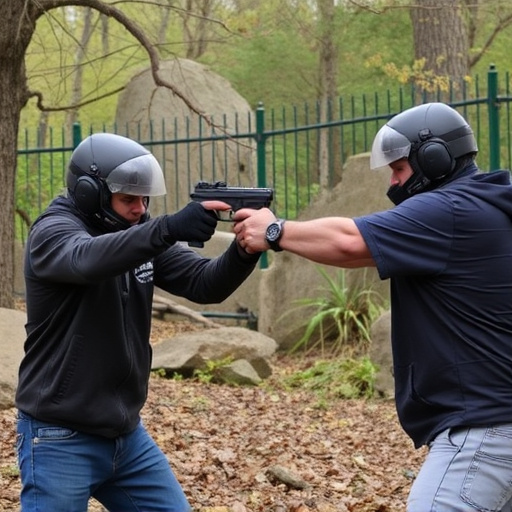The stun gun, an electronic control device (ECD), uses high-voltage pulses to disrupt neuromuscular functions, leading to temporary immobilization. Modern designs prioritize safety with advanced features like sensitive triggers and smart sensors that minimize misfires in critical situations. Effective deployment requires precise target contact, but improper handling or incorrect angle can result in failure. Advanced sensors safeguard users by preventing accidental discharges, while training is crucial to understand neuromuscular effects, hand moisture as a trigger, and personal limitations to reduce misfire risks.
Stun guns, designed to incapacitate via neuromuscular disruption, require careful consideration to prevent misfires. This article delves into the critical safety features mitigating such risks, focusing on understanding the neuromuscular effects of stun devices, design innovations for safe operation, target contact and angle’s role in misfire prevention, advanced sensors, training, and awareness—essential components for responsible use. By exploring these aspects, we enhance user protection and ensure the reliable functioning of stun guns.
- Understanding Neuromuscular Disruption: How Stun Guns Work
- Design Innovations for Safe Operation: Preventing Misfires
- The Role of Target Contact and Angle in Misfire Risk
- Advanced Sensors and Safety Mechanisms: Ensuring User Protection
- Training and Awareness: Essential Components for Misfire Prevention
Understanding Neuromuscular Disruption: How Stun Guns Work
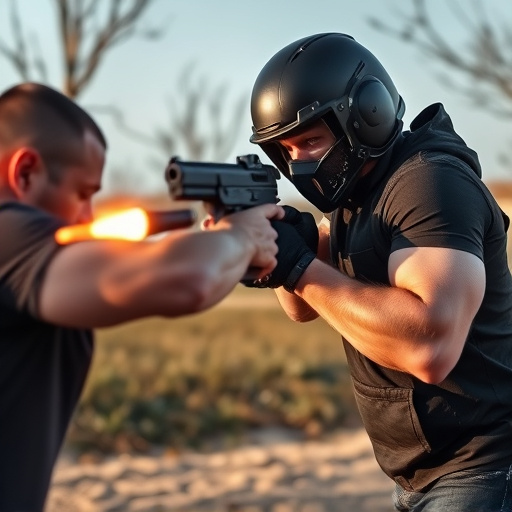
Stun guns, also known as electronic control devices (ECDs), work by employing high-voltage, low-current electrical pulses to disrupt the neuromuscular system of a target. The neuromuscular effects of stun devices are designed to incapacitate an individual temporarily without causing significant harm. When activated, the stun gun delivers an electric shock that interferes with nerve impulses and muscle contractions, leading to a loss of balance, coordination, and strength.
This disruption is achieved by targeting specific motor neurons responsible for controlling voluntary muscular movement. The electrical current disrupts the normal transmission of signals from these neurons to the muscles, resulting in a paralyzing effect. This neuromuscular disruption ensures that the device can quickly subdue an aggressor while allowing bystanders and law enforcement to intervene safely.
Design Innovations for Safe Operation: Preventing Misfires
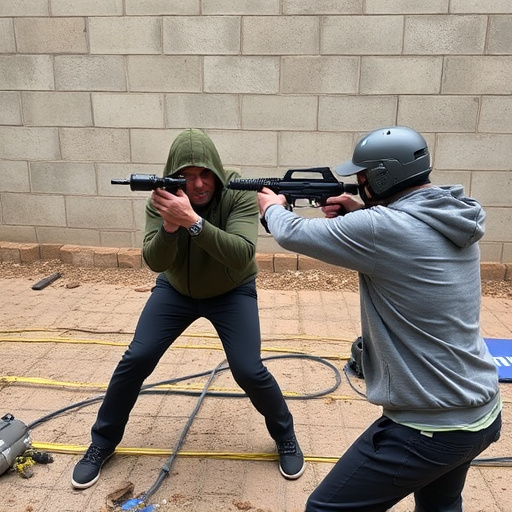
Modern stun gun designs prioritize user safety through innovative features aimed at preventing misfires, ensuring their effectiveness in high-pressure situations. One key aspect is understanding the neuromuscular effects of stun devices, which can be triggered inadvertently but lead to significant consequences. Advanced mechanisms now incorporate sensitive triggers that require a firm and deliberate press, reducing accidental activations.
These design innovations often involve precise electrical pulse control, ensuring the stun gun delivers a consistent and targeted jolt only when intended. Additionally, some models include smart sensors that detect body movement and proximity, deactivating the device when not in contact with a target or when the user releases the trigger, further minimizing misfire risks. These safety features are crucial in law enforcement and personal defense scenarios, where reliable operation without accidental discharge is paramount.
The Role of Target Contact and Angle in Misfire Risk
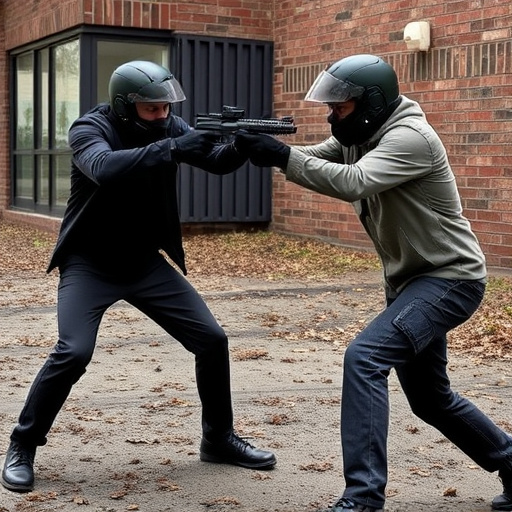
The effective deployment of a stun gun relies heavily on proper target contact and angle, as these factors significantly influence the device’s performance and reduce the risk of misfire. When activated, stun guns utilize electric current to disrupt the neuromuscular system of the target, causing immediate incapacitation. The accuracy of this disruption depends on direct contact with conductive tissues like skin or muscle. Even a slight misalignment in angle can lead to inconsistent or failed activation, resulting in a misfire.
The neuromuscular effects of stun devices are designed to be rapid and potent, but they demand precise application. Holding the stun gun at an incorrect angle or missing the intended target area can prevent the electric current from flowing effectively. This is especially critical when dealing with moving or unpredictable targets, where maintaining consistent contact and angle becomes even more challenging. Proper training and understanding these mechanics are essential to minimize misfire risks, ensuring the stun gun’s intended effectiveness in self-defense scenarios.
Advanced Sensors and Safety Mechanisms: Ensuring User Protection
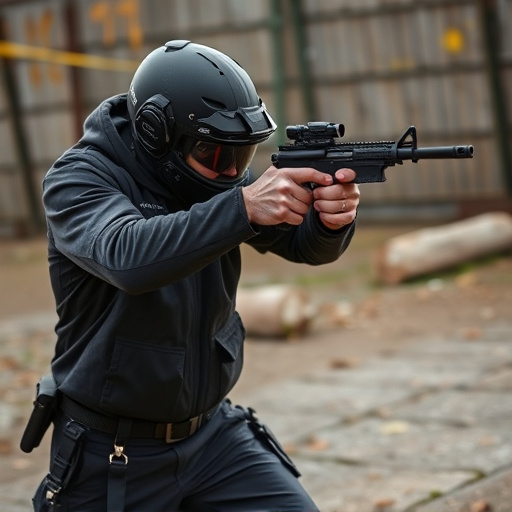
Advanced Sensors and Safety Mechanisms play a pivotal role in ensuring user protection from the neuromuscular effects of stun devices. These sophisticated technologies are designed to prevent accidental discharges, safeguarding both the user and bystanders. Modern stun guns are equipped with sensitive sensors that detect physical actions, such as sudden movements or impacts, which can trigger a misfire. By employing intricate algorithms, these sensors can differentiate between intentional usage and potential accidents, ensuring the device activates only under controlled circumstances.
Moreover, safety mechanisms like automated shutdown features and intelligent circuit breakers further mitigate risks. When a stun gun detects an abnormal situation, such as prolonged activation or unexpected jolts, it automatically shuts down to prevent excessive energy discharge. These safeguards are particularly crucial for users who might have limited training or find themselves in high-stress situations, where impulsive movements could lead to unintended consequences.
Training and Awareness: Essential Components for Misfire Prevention

Training and awareness are paramount in preventing stun gun misfires, a critical aspect often overlooked in self-defense preparation. The neuromuscular effects of stun devices can be unpredictable, making proper handling and understanding essential. Through comprehensive training, users can learn to recognize potential triggers for misfire, such as wet or oily hands, which can impact the device’s electrical conduction.
Awareness includes recognizing personal limitations and environmental factors. Users must understand that physical stress or anxiety can influence their ability to operate the stun gun effectively. Regular practice sessions, focusing on technique and mindset, empower individuals to respond calmly under pressure, reducing misfire risks significantly.
The evolution of stun gun design, focusing on misfire prevention, is a critical aspect of ensuring user safety. By understanding the neuromuscular disruption these devices cause, manufacturers have developed innovative features to mitigate risks. Advanced sensors, precise target contact, and user training play pivotal roles in minimising misfires, enhancing overall reliability, and promoting responsible use. These ongoing efforts underscore the commitment to making stun devices safer, thereby safeguarding users while empowering them with an effective self-defense tool.
